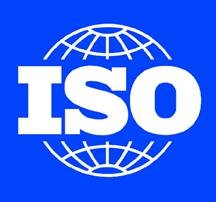ISO fire-related activities

ISO (International Organization for Standardization) is the world's largest developer and publisher of International Standards for business, government and society. ISO is a network of the national standards institutes of 163 countries, with a Central Secretariat in Geneva, Switzerland. ISO is a non-governmental organization that forms a bridge between the public and private sectors. On the one hand, many of its member institutes are part of the governmental structure of their countries, or are mandated by their government. On the other hand, other members have their roots uniquely in the private sector, having been set up by national partnerships of industry associations. Therefore, ISO considers both the requirements of business and the broader needs of society.
ISO standards are developed by technical committees (TC) comprising experts from the industrial, technical and business sectors which have asked for the standards, and which subsequently put them to use. These experts may be joined by representatives of government agencies, testing laboratories, consumer associations, non-governmental organizations and academic circles. A TC may have assigned Sub-Committees (SC) with working groups (WG) to cover certain areas of work.
Fire safety issues appear in several TCs, but the only one solely dedicated to the fire field is
ISO/TC 92 fire safety. The scope of TC 92 is the standardization of the methods of assessing
- fire hazards and fire risk to life and to property;
- the contribution of design, materials, building materials, products and components to fire safety
and methods of mitigating the fire hazards and fire risks by determining the performance and behaviour of these materials, products and components, as well as of buildings and structures.
The subcommittees of ISO/TC 92 deal with the following topics:
TC 92/SC 1 Fire initiation and growth
TC 92/SC 2 Fire containment
TC 92/SC 3 Fire threat to people and environment
TC 92/SC 4 Fire safety engineering
TC 92/SC 1 - Fire initiation and growth has developed standards describing the basic reaction to fire parameters such as combustibility, heat of combustion, spread of flame, heat release and smoke development. Most of them have been taken over by the European Union for construction products and railways as well as by the International Maritime Organization IMO for sea going vessels. The main activities at the moment are revisions of standards for cone calorimetry, reaction to fire measurement, full-scale room test, ignitability, sandwich panels and FTIR toxic gas measurement.
TC 92/SC 2 - Fire containment develops standards for fire resistance and integrates calculation methods for fire safety engineering. Current work is focused on fire resistance tests for elements of building construction, computational structural fire design, and external exposure of roofs to fire.
TC 92/SC 3 - Fire threat to people and environment. The main topics concern fire effluents calculation methods, analysis procedures, adaption to fire safety engineering, species formed in fires, acute toxic effects, toxicants in soot, smoke and environmental effects. The current work is on life-threatening components of fire, sampling and analysis of fire effluents, as well as generation and measurement of aerosols.
TC 92/SC 4 - Fire safety engineering. The work covers assessment, verification and validation of calculation methods as well as fire risk assessment procedures. Current topics are fire zone models and behavioural scenarios.